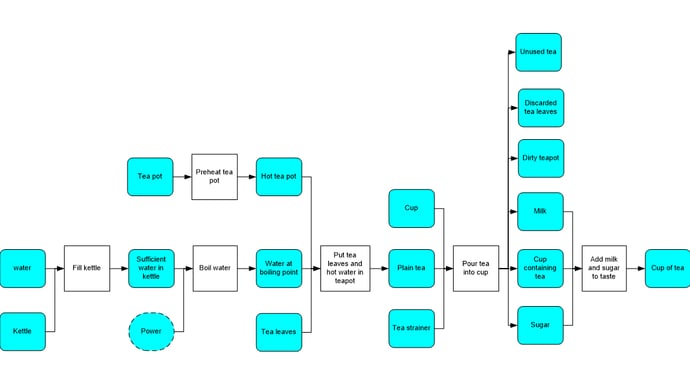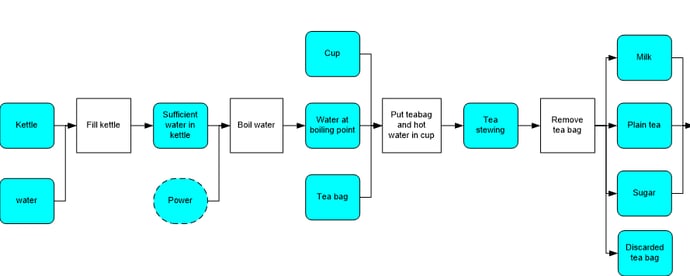There are many ways that process mapping can be used in an organisation to improve how that organisation works, but the one use that I have found to be the most productive is to model the 'what if' scenario. The law of unintended consequences comes in to play in too many efforts to drive improvement, particularly when improvements are driven on a local basis.The best analogy I have for looking at process improvement in a large organisation is that the organisation resembles a plate of spaghetti. Pull one piece of spaghetti on one side of the plate and an effect will be seen somewhere else on the plate.
Changes that affect both inputs and outputs will generally affect other processes in the organisation to a greater or lesser extent. It is easy to estimate the effects on the adjoining processes that directly use the output or supply the input, but what about effects on the wider processes.
Learning how to process map is one thing, learning to process map in a way that will lead to process improvement is another. If you're struggling with your understanding of how to process map with a process improvement focus, I recommend reading this  which will help you learn how to create greater efficiency by process mapping.
which will help you learn how to create greater efficiency by process mapping.
Process Mapping and the Law of Unintended Consequences
Using process mapping to show the end-to-end processes used within an organisation is one way to assess the effects that process changes may have. However, there are some words of caution to be found in doing this.
My experience has been that when processes are mapped, the primary inputs and outputs to processes are included in the mapping, but secondary inputs and outputs may be overlooked. What do I mean by primary and secondary inputs and outputs? Primary inputs and outputs are those things that are the subjects of the transformation in the process, whilst secondary ones tend to be the facilitators or the by-products of the process. It is these that I have found, tend to cause the problems.
Using a typical process such as making a cup of tea as an example, I have provided a typical traditional process map for making tea - shown below...

After a review had taken place to identify a better way of making a cup of tea, the following process map was selected to replace the traditional way...

The new process has several advantages, particularly when considering the utilisation of inputs; a teapot and a strainer are no longer needed and there are far less outputs to consider; the dirty teapot and strainer, discarded tea leaves and unused tea In the pot.
Process Improvement: Taking a Wider View
From the primary actors perspective, it is a more efficient process using less resources and produces less waste. However, if we look out to some of the suppliers and customers of the process there will be changes required to their processes as well.
The person who purchases the tea needs to be involved in the change as they may have a long term agreement with the supplier to provide tea leaves, which may need to be renegotiated, or they may have already purchased a long term stock. What happens to that? Also what do you do about all the equipment that is being made redundant? There are potential storage and disposal issues to be dealt with.
Taking a more distant perspective, the tea leave waste was being recycled with roses in the garden. Can tea bags still be used? Can you also get the blends of tea in tea bags that you can get with tea leaves and how will your customers feel about the service if you cannot?
Although this can be considered a rather trivial example in the grand scheme of things, I hope that it does highlight that when making changes to processes, a wider view should be taken, particularly from the perspective of suppliers and customers and the effects changes may have on their processes.
If you're interested in learning more about how to create a successful process improvement project, make sure you read the  which documents the strategies 8 organisations used to improve their processes organisation-wide.
which documents the strategies 8 organisations used to improve their processes organisation-wide.
Why Your Process Improvement Project Plan is Failing
How to Avoid the Human Error Problem in Process Improvement
What is Lean Six Sigma? Tools for Process Improvement
Written by Terry Giles
Terry Giles is a consultant for TerryAG Consultancy. He has a great deal of experience in developing Business Management Systems based around a variety of models including ISO 9001, TL 9000, ISO 14001, EFQM, Baldrige, CMMi, ITIL, RiskIT and CobiT 4.1 & 5.

